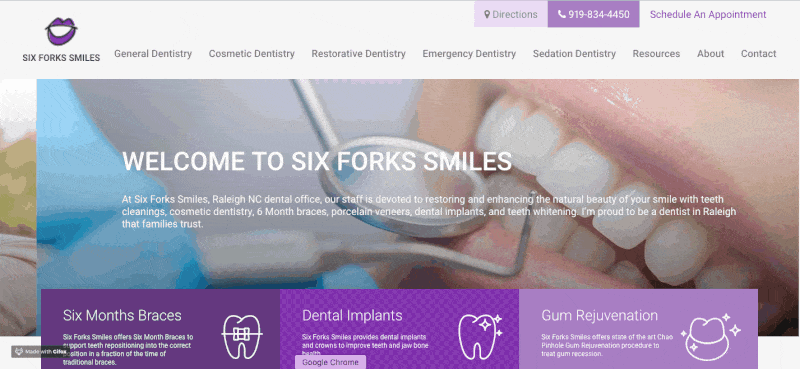SEO, or Search Engine Optimization, for dentists refers to the strategy of optimizing a dental practice's website and on-line presence to improve its visibility and rating in search engine results pages (SERPs). The aim of dental web optimization is to attract more natural (non-paid) site visitors to the dentist's web site, thereby growing the possibilities of buying new sufferers. search engine optimization for dentists includes numerous methods and strategies tailor-made to the dental business and native search.
Here are some key parts of SEO for dentists :
1. Keyword Research:
Identifying relevant keywords and phrases that potential patients might use when searching for dental companies. This can include specific remedies, procedures, or location-based keywords.
2. On-Page Optimization:
Optimizing the dentist's web site structure, content, and meta tags to make it search engine pleasant. This contains using target key phrases naturally throughout the web site content, optimizing title tags, meta descriptions, and header tags.
three. Local SEO:
Optimizing the net site for local search to draw sufferers from the dentist's geographical space. This contains creating and optimizing a Google My Business profile, obtaining on-line evaluations, and ensuring correct and consistent business data across on-line directories.

4. Mobile-Friendliness:
Ensuring that the dentist's web site is mobile-responsive, as an growing number of users search for dental companies on smartphones and tablets. Google also considers mobile-friendliness as a rating issue.
5. Quality Content Creation:
Creating high-quality, informative, and interesting content material related to dentistry, oral health, and customary dental procedures. Regularly updating the internet site with blog posts, articles, or movies can attract organic site visitors and set up the dental follow as an authority in the subject.
6. Link Building:
Acquiring high-quality backlinks from respected websites, dental associations, and local businesses. Backlinks from authoritative sources can enhance the net site's credibility and enhance its search engine rankings.
7. Technical SEO:
Addressing technical features of the internet site, similar to optimizing website pace, fixing broken hyperlinks, making certain safe connections (HTTPS), and creating an XML sitemap. Technical search engine optimization ensures that search engines can crawl and index the web site successfully.
eight. Social Media Integration:
Integrating social media profiles with the internet site and inspiring patients to share their experiences on-line. Social signals, such as likes and shares, can not directly impression search engine rankings.
9. Monitoring and Analytics:
Using tools like Google Analytics to monitor website visitors, person conduct, and conversion rates. Regular analysis helps dentists understand the effectiveness of their search engine optimization strategies and make data-driven decisions for improvement.
By implementing these web optimization strategies, dentists can enhance their on-line visibility, entice more native sufferers, and set up a robust on-line presence in their community..
